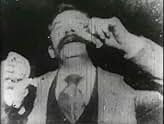Edison Kinetoscopic Record of a Sneeze
- 1894
- 1min
Ajouter une intrigue dans votre langueA man (Thomas Edison's assistant) takes a pinch of snuff and sneezes. This is one of the earliest Thomas Edison films and was the first motion picture to be copyrighted in the United States.A man (Thomas Edison's assistant) takes a pinch of snuff and sneezes. This is one of the earliest Thomas Edison films and was the first motion picture to be copyrighted in the United States.A man (Thomas Edison's assistant) takes a pinch of snuff and sneezes. This is one of the earliest Thomas Edison films and was the first motion picture to be copyrighted in the United States.
















